11 mins read
Explore the 25 Best Enterprise Applications & Tools [2025]

Today, organizations need reliable access to data across the board. This is important for small businesses, but enterprises are even more pressured to acquire the best data management processes and tools to ensure stable development. The astonishing potential that enterprise software (ES) has introduced to the world through the power of technology has shifted how businesses grow and how they keep their operational and strategic initiatives under control and up to date. Streamlining large-scale data requires large-scale software, and, in this article, you will find out everything you need to know – from 3D estimating software to project management and web analytics solutions, you’ll find insights into all relevant software areas.
We will start by looking at the enterprise software definition, explaining the benefits a business can obtain from utilizing it and the best enterprise software companies that offer crucial features to compete in our cutthroat environment. Ultimately, you will see how taking advantage of the names on our list can benefit your enterprise, whether small or large.
What Is Enterprise Software (ES)?
Enterprise software is a computer application that aims to assist big companies with several needs, such as data analysis, sales and marketing management, customer service, and many others. Typically, these tools are designed to serve a large number of users with high scalability and integration capabilities.
Such software is used in large industries such as construction, governments, retailers, hospitals, and departments such as sales, marketing, customer service, and finance. This kind of software obviously requires interdisciplinary methods and processes to manage large data sets, and numerous solutions on the market provide just that. For example, an enterprise application focused on construction collaboration will have numerous features that enable professionals to simultaneously access one solution to generate and share information.
To easily automate numerous processes and tasks and add value to your business operations, we will take a detailed look at the best enterprise tools for 2025, where we will discuss different areas and provide an example tool for each. We will also consider Capterra and G2 ratings as two of the leading websites for verified software reviews that can provide you with additional information. All the rankings mentioned in this post are from December 2024, and the chosen software has a minimum of 50 reviews on both platforms.
Why Is Enterprise Software Important?
As mentioned, professional enterprise management software can assist large businesses in efficiently managing and optimizing their operations thanks to advanced technologies such as automation, data analytics, collaboration, and many others. As we will see throughout our list of the top tools in the market, there is a wide range of them available for different functions and areas of an organization, such as finances, IT, HR, marketing, and more, each of them offering different functionalities to make organizations more efficient across the board. That said, no matter what area you are trying to cover, all types of enterprise software offer a set of key benefits that we will discuss below.
- Improved organizational efficiency: Enterprise management tools assist in automating tedious, time-consuming tasks that would take employees hours to complete. In time, this leaves the different teams enough time to work on more valuable tasks, resulting in enhanced operational efficiency and better business outcomes for less money and effort.
- Improved employee productivity: As mentioned in the previous point, this type of software makes employees’ work much more efficient and pleasant because it provides features to facilitate their daily operations on multiple levels. This enhances employees’ overall efficiency and productivity, making it easier to collaborate with other teams.
- Improved products and services: Enterprise software gives businesses the necessary knowledge to make informed decisions about product development and management. Accessing all relevant details related to product performance can help optimize bottlenecks and offer the best products or services based on customers’ needs.
- Improved customer satisfaction: Naturally, how an organization works internally will directly influence how customers perceive it later. ES helps businesses manage their workflow to keep customers happy and returning for more. Software such as CRM or marketing automation provides a centralized view of customer data to understand what works and what doesn’t. Let’s talk about it in more detail below.
Types Of Enterprise Software by Business Area
As you saw in the previous section, ES can improve an organization’s overall functioning, from employees to products and customers. That said, these types of software are extremely valuable in a wide range of categories and business areas, and we will take a quick look at each of them.
- Sales: For enterprises, sales are a complicated process that involves many steps and key players. To keep everything in check and as efficient as possible, organizations rely on sales software to automate key processes, boost collaboration between teams, track performance through analytics and sales reports, and get a 360-degree view of all sales operations. CRM tools are often used to unify marketing and sales activities to improve business outcomes.
- Marketing: ES is widely used in the marketing department to help identify customers’ preferences and pain points and optimize all touch points to ensure they stay engaged and satisfied with the company. Just like in sales, marketing teams also rely on CRM enterprise systems to segment customers, run promotional campaigns, and gauge their effectiveness to generate leads, perform real-time analytics, and automate social media management, among other tasks.
- Human Resources: The bigger the enterprise, the harder it becomes for the HR department to efficiently carry out all employee-related tasks and processes. For this reason, decision-makers implement software to assist in managing and automating different HR processes such as recruiting, payroll, employee training, performance management, HR reporting, and more. In fact, the HR technology market is expected to grow exponentially in the coming years, reaching a value of $39.90 billion by 2029.
- Finances: Arguably one of a business’s most important areas, the financial department can also greatly benefit from using this software. For instance, it can automate tax reports and stay compliant with the law. Still, it can also be used for other relevant tasks such as budgeting and forecasting, accounting reports, expense tracking, revenue management, production planning, and any other financial reporting and analysis processes. Given that the finance department needs to be connected with all other business areas, this software usually provides easy integration with other tools.
- IT: For big corporations, IT analytics software is crucial for managing any system issues. In previous years, cyberattacks have become a latent threat, so the need for real-time system monitoring has become critical. These platforms help identify common threats and issues, giving the IT department more time to focus on other tasks. Later in the post, we will look at an example of issue tracking.
- Customer Service: Customers are the most important aspect of any organization, no matter how big or small, and keeping them satisfied is of utmost importance. Large companies mainly use software to optimize customer support and offer their customers a swift way to solve any issue they might have. For instance, some platforms offer live chats on the website or other communication channels. In contrast, others offer real-time tracking of the number of issues, frequency, and time to ensure the demand is covered appropriately.
- Project Management: Enterprises carry out all kinds of projects that must be managed correctly to ensure success. The right software will enable decision-makers to manage all resources, processes, and people in a centralized location to get a 360-degree view of all project aspects. For instance, enterprise construction management software gathers all relevant project data from planning to completion and updates the progress of the different tasks in real-time, making it possible to make informed decisions while boosting collaboration.
- Supply Chain Management: Enterprise application software for supply chain management helps organizations streamline their supply chain from suppliers to customers. These platforms often include different modules for procurement, inventory and transportation management, shipments, and more, allowing decision-makers to spot inefficiencies and tackle them to maximize the entire supply chain process.
What Are the Best Enterprise Software Applications?
Since we answered the key question of what enterprise software is and discussed the main areas and benefits of using them, we will dive into our enterprise software list, comprised of the most popular solutions on the market. We will go through enterprise CRM software, construction cost estimation tools, user feedback software, ERP, online marketing, web analytics, customer service, and many other tools that will accumulate a list of the top 25. Each solution will be presented with a visual example as well as a brief explanation of its key features and what is best used. Hopefully, after going through our list with the most prominent enterprise software examples, you will have a better impression of what each of these solutions can do for your organization and why it’s useful to incorporate them into your daily operations and strategic initiatives.
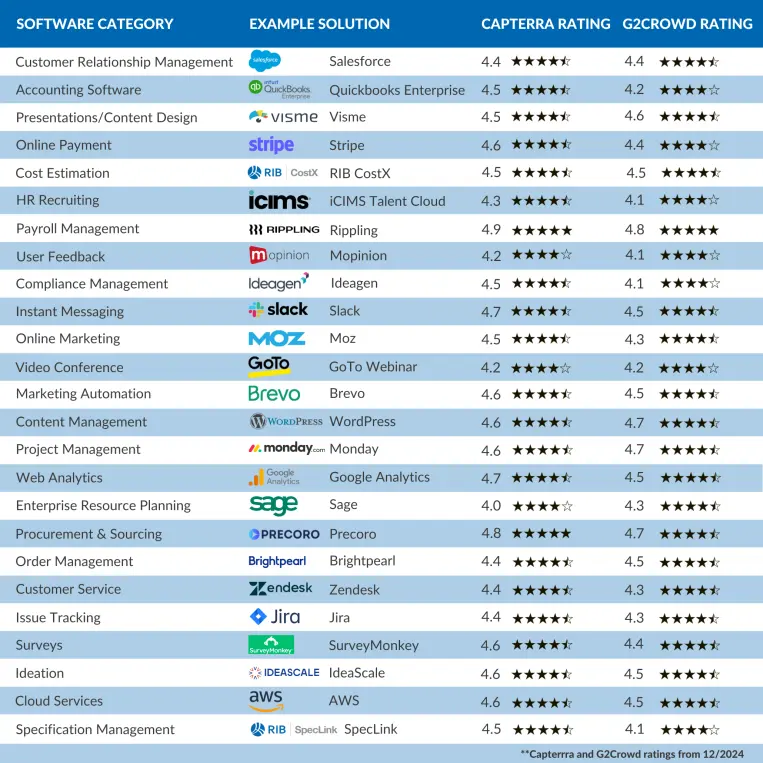
1) Customer Relationship Management (CRM)
Customer relationship management (CRM) combines processes, strategies, and tools enterprises use to manage and analyze customer lifecycles. It is one of the most important factors in the business pipeline, as it helps to improve customer loyalty and retention. Looking through customer data to make better sales decisions and track customers’ activities, CRM is an indispensable enterprise platform to manage and optimize interactions while building relationships with prospects. Given the importance of CRM, enterprises looking to succeed must invest in professional tools that allow them to gather data from different contact channels, including telephone, live chats, emails, and others, and integrate them to compare customer’s behaviors and buying preferences.
Salesforce
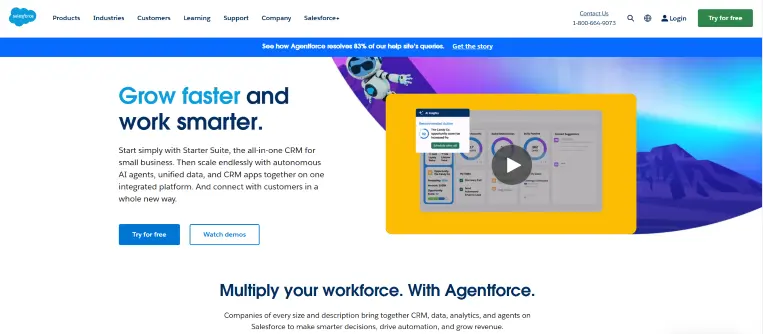
Key features:
- Centralized, cloud-based software for all CRM efforts
- Customer 360 products that contain 12 core solutions
- The possibility to build your own apps with the Lightning App Builder
Often referred to as the industry standard for CRM, Salesforce delivers a cloud solution focused on finding, winning, and keeping customers based on various products in their portfolio, such as their sales and service platform, ecommerce solutions, app integrations, and personalized marketing for potential customers. Salesforce offers 12 solutions in their 360 products, all of which have their respective focus on different areas of customer management. Capterra and G2 users gave this tool 4.4 stars, making it a great CRM solution for companies looking to unify their sales and customer undertakings.
2) Accounting Software
Long gone are the days of using infinite spreadsheets to track financial activities. Modern accounting software provides the necessary tools and functionalities to help large businesses manage their finances more efficiently and automatically. Along with key reporting and analytics features, these platforms also assist in tracking day-to-day financial activities, including asset, expense, and revenue management, as well as accounts payable and receivable. Let’s jump into our example for this category.
QuickBooks Desktop Enterprise
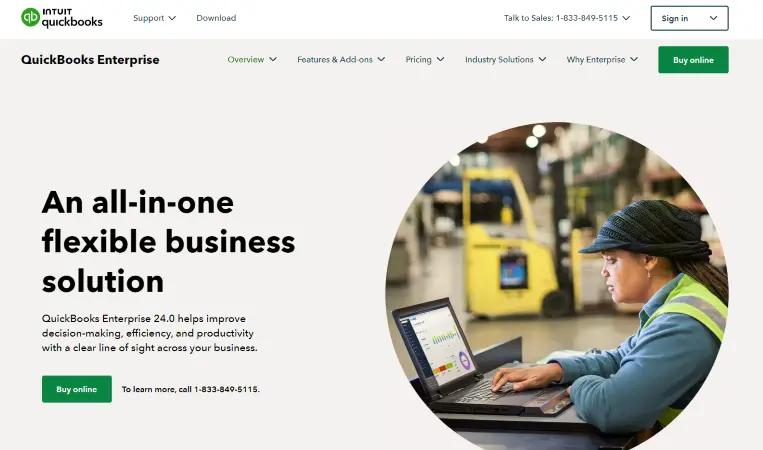
Key features:
- Real-time job costing to ensure all projects stay within the budget
- Intercompany transactions to consolidate financial statements from multiple companies
- Powerful inventory management features, including automation and multi-level categorization
As its name suggests, QuickBooks Desktop Enterprise is a desktop-based financing and accounting management tool that assists enterprises in handling everything from invoicing to inventory management. It is an all-in-one solution that automates pricing, order fulfillment, budgeting, forecasting, and reporting with over 200 customizable templates for cash flow analysis, item profitability, and more. It allows up to 40 users on one account and can track up to 1 million items, customers, and employees, making it an excellent solution for larger companies. The tool also offers five industry-specific editions for retail, nonprofit, contractors, manufacturing and wholesaling, and professional services, each including a set of custom features. All this earns QuickBooks Enterprise a positive 4.5 stars rating on Capterra and 4.2 on G2, making it one of the best enterprise accounting software out there.
3) Presentations / Content Design
Our list of enterprise software applications wouldn’t be complete without a content design tool. Content design plays a crucial role in an overall marketing strategy. This is because the visuals, colors, and shapes you introduce are the identity elements with which your customers will identify you. Whether you want to promote a product or service or make a presentation for relevant stakeholders, a professional content design solution can help you create visually appealing content that engagingly describes your message. Now, let’s review an example of a content design solution.
Visme
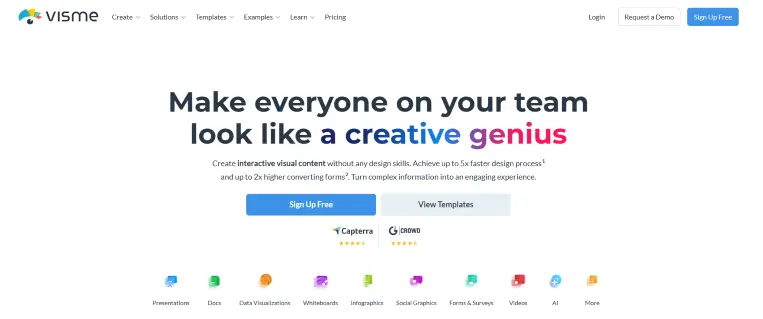
Key Features:
- It is an all-in-one content design toolkit that offers dozens of features that help create visual content
- A rich database of various professionally built templates across different categories
- It offers a free trial and a free basic plan
Visme is a content design tool that anyone can use. Whether you are a professional designer or an average user with no technical knowledge, you can use the tool to create multiple presentations and engaging infographics in an interactive yet straightforward way. Visme is especially helpful for those people who are in the fields of education and marketing. It can also be used to present complex information in an intuitive way with multiple chart templates. The best part of this tool is its simplicity. You can create an account in a matter of minutes and start working on your project immediately. Capterra reviewers gave Visme a solid 4.5 stars rating, while G2 reviewers gave it a 4.6.
4) Online Payments
The payment processing and fintech industry heavily relies on online payment software. With the world more connected than ever before, enterprises need to manage their payments by choosing solutions that are easy to manage and reachable for merchants and customers worldwide. Let’s examine an example of this category of enterprise tools.
Stripe
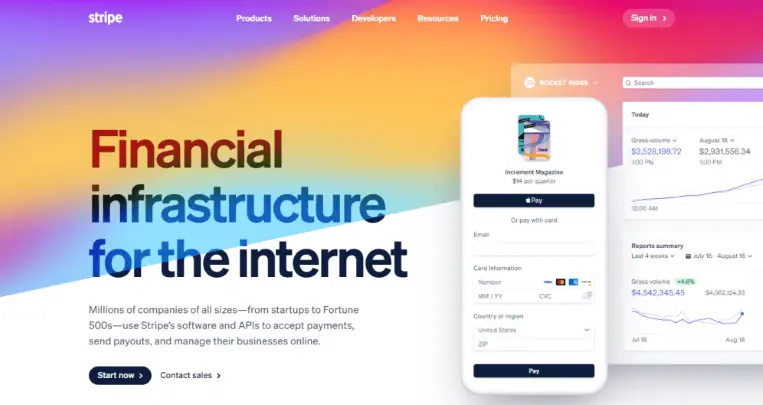
Key features:
- Charging method based on each payment so you don’t have to invest large sums at once
- Partnership options with other solutions such as Stripe Sigma, CashNotify, ChartMogul, etc.
- Convenient also for customers who can sign up on the merchant’s page and access their data
A global leader in online payments, Stripe has disrupted the industry, and its technology has become a benchmark in smooth payments, fraud detection, subscription management, etc. It’s fairly easy to use and offers recurring payments that some companies might find useful. Stripe charges a small fee on each payment so you don’t have to invest large sums into different payment methods. It offers various partnership options with other sites that make it easy to implement Stripe to billing software, for example. G2 reviewers gave this tool 4.4 stars, while Capterra ones gave it an extremely high rating of 4.6 stars. Hence, Stripe is worth testing to explore all the features on your own.
5) Cost Estimation
Cost estimation is the process of forecasting the costs of the resources required to complete a project, including materials, workforce, equipment, overheads, and others that can be specific to the industry. This process is carried out at the planning stage, and it is fundamental to generate an accurate budget that will ensure the project is profitable. Traditionally, the cost estimation process was done manually, which made it time-consuming and subject to human error. Luckily, professional cost estimation software eliminates the need for manual tasks, offering unmatched levels of speed and precision. To illustrate the value of this software category, we will discuss a construction cost estimating software example.
RIB CostX

Key features:
- 3D/BIM support to accurately estimate quantities and costs from BIM files
- 2D takeoff capabilities to measure quantities with just a few clicks
- Spreadsheet-based estimates that are live-linked to drawings for up-to-date project data
RIB CostX is an all-in-one BIM takeoff and estimating software with powerful features for error-free estimating. The tool, which has a 4.5 rating in Capterra and 4.5 in G2, goes beyond the preconstruction planning stage, supporting users throughout the entire project lifecycle. A revisions tracking feature lets you highlight any design changes and automatically update the quantities and estimates to prevent errors. The different project stakeholders can work simultaneously on drawings, takeoff, and estimating documents, ensuring a single source of truth for all tasks and decisions. Additionally, professional reports allow you to showcase changes in real-time to boost collaboration and communication between stakeholders.
6) HR recruiting
Recruiting has become digitalized more than ever. With the ever-changing human resources demands to screen thousands of candidates and handle all the data collected along the way, enterprise HR software is needed to help recruit, connect, and onboard potential employees. This is where a solution such as iCIMS can make a strong impact; with a positive 4.3-star rating on Capterra and 4.1 in G2, this solution positions itself as a leader in the HR environment.
iCIMS
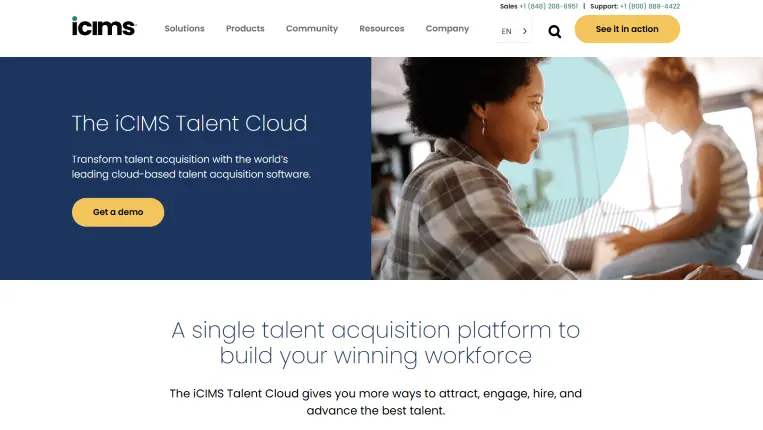
Key features:
- Robust suite focused on recruitment marketing, communications and hiring
- Partnership with hundreds of recruiting solutions through an extensive marketplace
- Preboarding feature to ease the candidate’s beginnings into the new company
Also, one of the cloud-based software on this list, iCIMS, promises “seamless candidate journeys, from application to offer to preboarding.” An enterprise recruitment platform, this software offers a range of automated workflows, analytics, and tracking features to ultimately shorten the hiring cycle and optimize the entire HR department. It provides a complete suite for candidate relationship management, advanced communications, and hiring alongside a partner ecosystem that lets you integrate other recruiting solutions via its marketplace.
7) Payroll Management Software
Payroll management is arguably one of the most important tasks for the HR department. During the payroll process, businesses must ensure compliance with tax laws and other financial regulations, which becomes more complicated as the number of employees grows. With that in mind, enterprise payroll software helps manage and automate the payroll process while ensuring compliance across the board, leaving HR employees more time to focus on other important tasks. As an example, for this section, we have chosen Rippling, one of the leading payroll platforms in the market.
Rippling
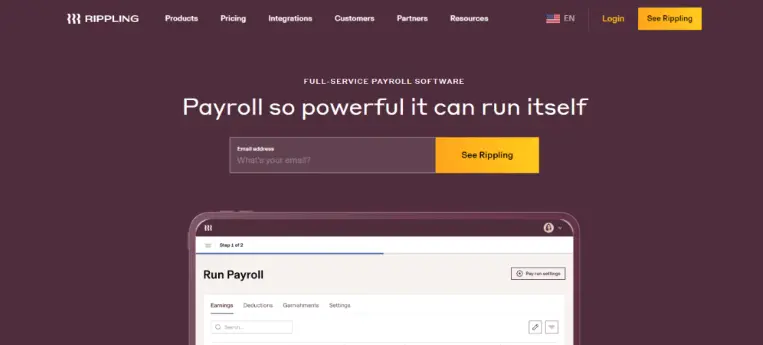
Key Features:
- Fully automated payroll data synchronization to avoid any manual calculations
- Mobile app for employees to check their paystubs, request time off, and more
- Automatic compliance features like tax filling in all legal forms from I-9’s to W-2’s
Rippling is a payroll tool that helps organizations efficiently manage their payroll processes through powerful automation features. It is affordable and can be integrated with any other tool you might need during the payroll process – which they claim will only take 90 seconds to complete. That said, Rippling stands out from other big players in the HR industry because it provides international payroll capabilities, making it possible to pay any employee in minutes, no matter where they are in the world. Another feature for which this solution is recognized is its automated compliance features, such as automatic tax filing with all kinds of legal forms, including laws and regulations regarding employee compensation and taxes. All these powerful functionalities earned Rippling an almost perfect score of 4.9 stars on Capterra and 4.8 on G2.
8) Customer & User Feedback
Looking at your users’ opinions is an insightful activity that can lead to a better customer experience. With customers increasingly looking for personalized buying experiences, finding improvement opportunities directly from your community can be invaluable. For that goal, enterprises rely on professional user feedback software with powerful data and analytics functionalities to create a feedback ecosystem that enables them to proactively improve their product and share findings across the company. One of those solutions is Mopinion.
Mopinion
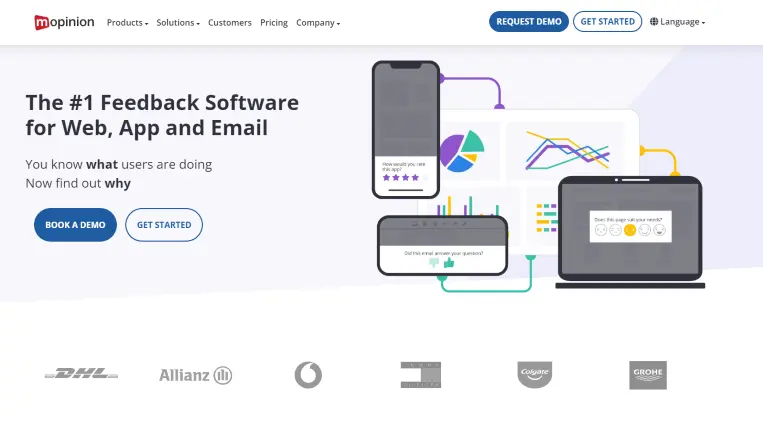
Key features:
- Customizable feedback forms that include various customer experience metrics
- Real-time statistics that are categorized according to different feedback topics
- Integrations with other applications such as Slack, Jira, Adobe Analytics, Marketo, etc.
An all-in-one user feedback platform, Mopinion helps digital enterprises manage all digital touchpoints (web, mobile, and e-mail) related to understanding customers’ behaviors. The enterprise application enables users to create customizable feedback forms, including visual user feedback that offers automated screenshots. Triggering forms based on user behavior, device type, and demographics can give you useful information about your site visitors and their position in your conversion funnel. It also includes visualizations through customizable dashboards and the easy import of your data through Excel and CSV. A rating of 4.2 stars in Capterra and 4.1 stars in G2 makes Mopinion a software worth looking into.
9) Compliance Management Software
Enterprise compliance refers to the methods, processes, and tools companies use to adhere to the laws, regulations, and ethical practices required by governmental authorities. These regulations will vary from industry to industry but are most commonly related to employee rights, financial transparency, data protection, and, most recently, environmental impact. To meet all the aforementioned requirements, enterprises rely on professional compliance management software to keep track and organize all the information, generate documents, and ensure efficient and reliable compliance across the entire organization. To help you put the value of these kinds of solutions into perspective, we will dive into Ideagen, one of the most popular compliance software in the market.
Ideagen
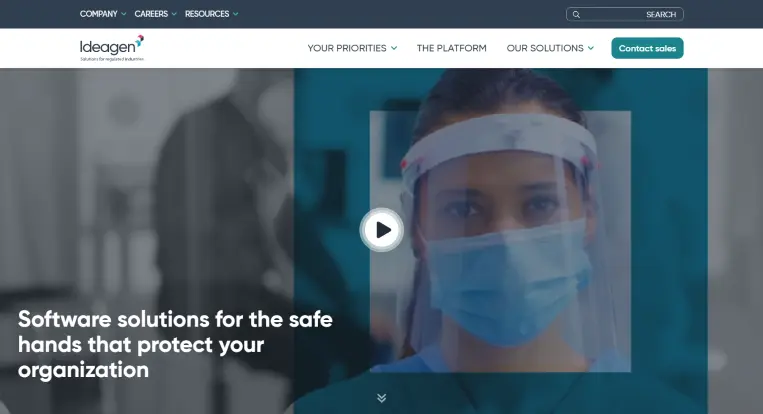
Key features:
- Data protection policies aligned with the ISO/IEC27001:2013 standard
- Compliance with customer supply chain quality standards like FAI, PPAP, APQP, and more
- EHS solution to ensure incident prevention, efficient inspections, and environmental compliance
Ideagen is a SaaS compliance platform built for highly regulated industries, such as manufacturing, food and drink, transport, aerospace, and energy, looking to protect their employees, customers, operations, and overall reputation. The tool offers a complete suite of audit and risk management solutions, including reporting for a range of local and regional frameworks, internal audit software for accurate and efficient risk assessment with real-time KPIs and KRIs, and document sharing solutions to help team members collaborate simultaneously securely and efficiently without the risk of losing any critical information. Additionally, Ideagen provides an award-winning methodology built under four pillars of policy, learning, assurance, and reporting to help companies meet GRC obligations through an e-learning platform to train employees about all relevant compliance aspects. All this has earned the platform a positive rating of 4.5 stars in Capterra and 4.1 in G2.
10) Instant Messaging
Instant messaging has become a standard process in enterprises since the digitalization of the world economy, and remote working becoming the new norm. The rapid response enables users to instantly access important information since other forms of communication can take longer to compile. E-mail, for example, usually requires careful formatting and takes longer to reply. With the massive adoption of instant messaging software such as Viber and WhatsApp, communication between employees has become rapid and more efficient. For this category, we are exploring one of the most prominent players, used by thousands of companies worldwide.
Slack
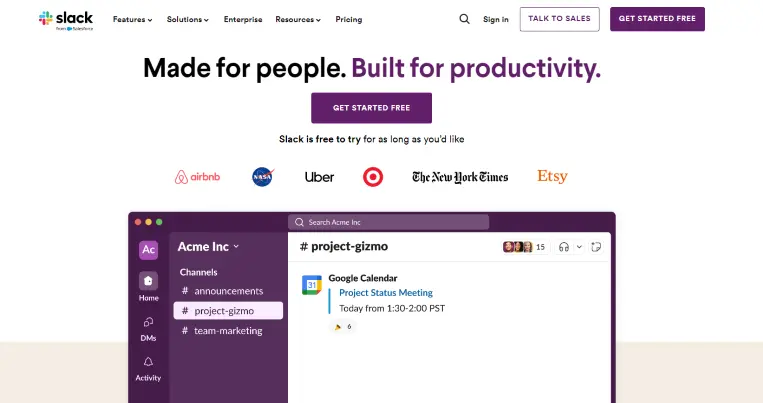
Key features:
- Organized conversations into channels and direct messages
- Searchable history that makes finding information from previously conducted chats quite easy
- The possibility of connecting with other enterprise software (e.g., Jira, Gmail, Outlook, Zendesk, Monday, etc.)
Slack is used by enterprises across the globe, and it gained a stable rating of 4.7 stars on Capterra and a solid 4.5 in G2. This enterprise software features communication collaboration and integration with various external tools and files while organizing messages into direct and clean channels. Different subscription plans allow your enterprise to scale Slack based on different business needs while enabling efficient and time-saving teamwork. Their built-in security and compliance guarantee that companies will have 11 different enterprise-level security features, and the possibility to connect with other platforms such as Salesforce, Zendesk, OneDrive, or Google Drive, among others, will ensure that teams have access to multiple tools from a single place.
11) Online Marketing
Marketing has developed in so many different areas that companies could not manage all the data points and develop successful strategies without software. From web analytics to content marketing, advertising, and social media, the right enterprise marketing software enables users to take full control of their data to track, monitor, analyze, and evolve promotional efforts. Here, we will focus on Moz as a complete inbound marketing solution with a Capterra rating of 4.5 stars and 4.3 in G2.
Moz

Key features:
- All-in-one inbound and SEO tool for tracking, monitoring, and analyzing enterprise inbound efforts
- Numerous features include keyword tracking, site audits, backlink analysis, and keyword research
- Enterprise package includes Moz Pro, Moz Local, and enterprise-grade SERP tracking
Whether your enterprise needs keyword tracking, monitoring, or link analytics, Moz is designed to bring all SEO and inbound data under one roof. With features like site audits, rank tracking, backlink analysis and keyword research, this enterprise application software takes care of all your enterprise SEO and inbound efforts. The online data for hundreds of locations are easily managed via their enterprise solution, including listings, reviews, and store locators. Additionally, they offer free educational materials that can upscale any project and ensure your websites are ranking.
12) Marketing Automation
Marketing automation software makes it easy for marketing teams to achieve the best possible results with minimal effort. Thanks to the extensive automation of different processes, such as cross-channel tracking and analysis of visitor behaviors, communication with prospects, customers, and partners across all available channels is enabled to increase reach and, ultimately, maximize customer value. Let’s look at this enterprise software application as an example.
Brevo
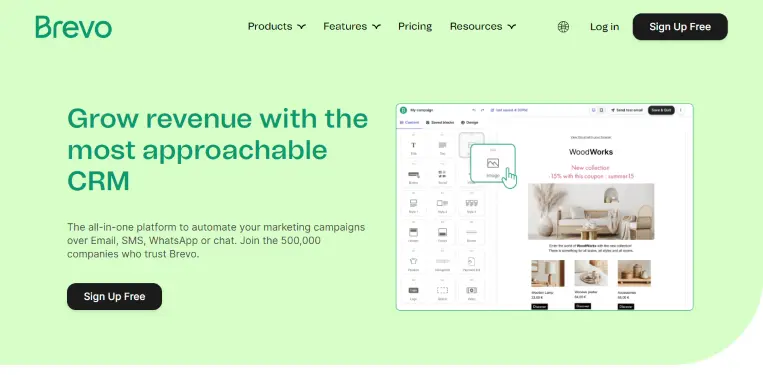
Key Features:
- Extensive automation options thanks to individual rules and conditions
- Synchronization with numerous third-party providers, such as WordPress, Shopify, or Salesforce
- Different workflows can be compared and optimized with the help of A/B tests
Brevo, formerly known as Sendinblue, is an all-in-one digital software solution that combines numerous marketing and sales tools in one platform. The marketing automation functions enable companies to provide each individual prospect or customer with targeted information. This is done by creating individual rules and conditions that trigger the sending of e-mails or SMS in a fully automated and personalized manner. In addition to various paid packages, Brevo offers a free software version with limited functions. With 4.6 stars on Capterra and 4.5 stars on G2, users rate the software positively across the board.
13) Video Conference
Online conferences and events, such as webinars, have become essential elements of everyday business life in recent years, especially after COVID-19, when digital communication was greatly enhanced. Effective remote communication is critical for these kinds of events, and you need the right software to handle large numbers of participants easily. Extensive features are needed to provide participants with the best possible experience during online events, which are in no way inferior to classic offline ones. Let’s see how this kind of enterprise software solution works in real life.
GOTOWEBINAR
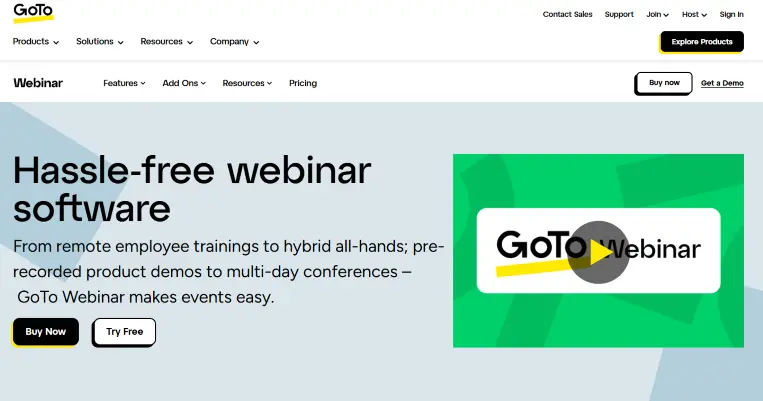
Key Features:
- Numerous webinar templates and flexible, automated scheduling options
- High level of privacy and security features for sensitive attendee information
- Built-in analytics in the form of analytics dashboards to track interactions and performance metrics
GoToWebinar is one of the most popular enterprise software providers for online events. It offers many features that help users create a seamless online environment and run great remote events. According to the company, over 50,000 customers worldwide rely on this solution and it hosts close to 3 million webinars annually. GoToWebinar provides a complete solution for creating and managing online events, including a video library and interactive features such as polls and Q&A so that assistants can interact like they would in an in-person event. Event management can be easily integrated with an existing marketing automation or CRM solution. In addition, the software has numerous positive customer reviews, manifesting in an average rating of 4.2 stars on both Capterra and G2. The software can be tested free of charge for 7 days.
14) Content Management Systems (CMS)
Building an intuitive website with a variety of digital content such as text, images, videos, and sections in which users can interact with the content is an essential component of a successful marketing strategy for any kind of company. As a rule, so-called content management systems (CMS) are used to create, publish, and manage content to deliver it in the best way possible. When choosing the right CMS, you first need to understand your specific needs and compare the available solutions in the market to find the one that fits your requirements perfectly. This is an important step as the offer for content management systems is wide, including free, open-source platforms as well as expensive but more complete enterprise tools. Let’s discuss this further through WordPress, one of the biggest CMS players.
WORDPRESS
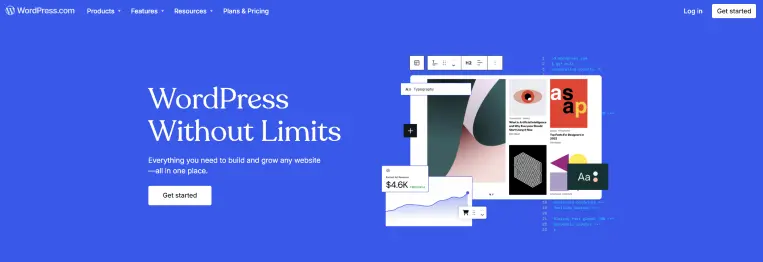
Key Features:
- Free, open-source platform that allows businesses to create websites, blogs, and/or applications
- More than 7000 themes that you can use as a style for your website and customize additionally
- Thousands of easy-to-install plugins and add-ons for any application scenario
WordPress is a free, open-source content management system currently used on over 40% of all websites worldwide. It is based on PHP and MySQL and is comparatively easy to implement and manage. There are thousands of free and paid plugins available that can be used to customize the CMS in aspects such as design, data collection, interaction, and many more. Although WordPress is a complete tool that facilitates website creation for many businesses, compared to much more expensive commercial CMS solutions, it has some limitations. Therefore, it is not always recommended for large companies with unique requirements, but it is very good business software for small businesses. The excellent ratings on Capterra (4.6 stars) and G2 (4.7 stars) reinforce this recommendation.
15) Project Management (PM)
Enterprise project management software is the perfect solution for teams looking to complete projects on time and within budget. Whether project alignment is needed, agile management is in focus, or simply better collaboration is desired, some enterprise software applications provide numerous project management features crucial to delivering the best possible results. Let’s see this through Monday, a tool that obtained ratings of 4.6 stars on Capterra and 4.7 on G2.
Monday
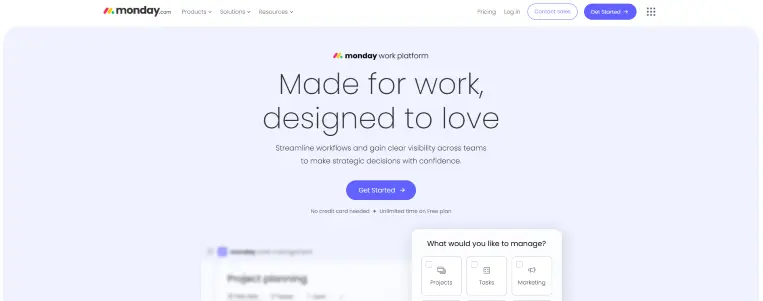
Key features:
- Customizable boards and available templates for managing all project aspects
- Workflow automation without the need to develop or implement any code
- Integration with over 50 other tools such as Zoom, Slack, Zendesk, etc.
One of the project management tools that also focuses on visual representation is Monday which helps enterprise teams manage workflows, everyday tasks, and projects through customizable boards that visualize the workload and timeline of everyone involved. Planning the team’s work visually, utilizing dashboards and charts to consolidate all the parts of the project, and easily reviewing results make Monday one of the big players in the industry. Integration with other tools such as Slack, Zendesk, Mailchimp, HubSpot and more than 50 different tools enables enterprises to bring various data into one central hub.
16) Web Analytics
Our list of types of enterprise software wouldn’t be complete without web analytics. A website is a powerful tool in today’s digital environment; without it, enterprises would be nearly invisible. But all that website data needs to be analyzed in order to successfully optimize a company’s presence, and that’s why web analytics software such as Google Analytics are required more than ever. With a stable rating of 4.7 stars on Capterra and 4.5 on G2, Google Analytics proves to be the go-to solution when it comes to website analysis.
Google Analytics
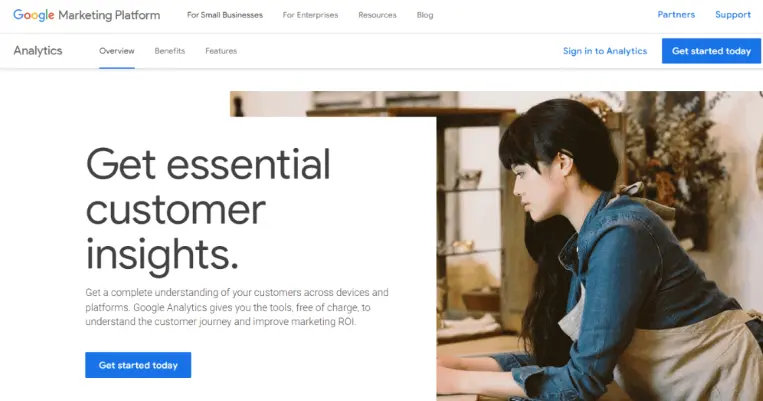
Key features:
- Data analytics and tracking of all relevant digital performance
- Fast implementation, automatic data collection, and customizable reports
- Integration with other tools such as Google Ads or Google Search Console
One of the most popular software on the market, Google Analytics lets you track all digital analytics that your online marketing efforts are focused on, whether paid, organic, social, or referral, among others. Numerous basic and advanced features will let you know where your traffic is coming from, track your lead generation processes, and inspect demographic information needed to optimize and exceed your enterprise digital metrics across search engines. Not only designed for small businesses, but this tool is also one of the business software applications that companies shouldn’t ignore.
17) Enterprise Resource Planning (ERP)
Enterprise resource planning (ERP) software helps enterprises integrate all management aspects of inventory management, accounting, CRM, human resources, advertising, and more. It allows enterprises to share information through a single database that enables users to access data from different business units as well as their own. Sage is one of the leading providers in the industry, with a Capterra rating of 4.0 stars and a G2 rating of 4.3.
Sage
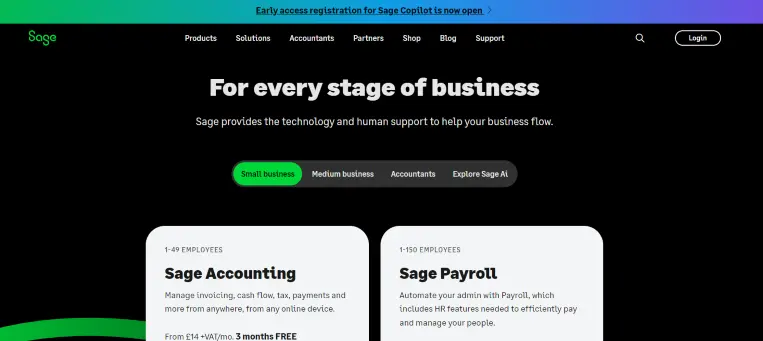
Key features:
- Main product capabilities include financial and production management, supply chain, etc.
- Built-in marketplace for extending the product based on your needs
- Complementary solutions developed directly by Sage or their partners
Sage ERP is a cloud solution divided into three core products: Sage 100cloud, Sage 300cloud, and Sage X3. By utilizing their solution, each enterprise can control all aspects of a business, from finance, supply chain, and production management to sales. They aim to provide an agile solution to companies looking to grow and manage their data from a single enterprise software solution. They also offer a marketplace to connect with other apps and scale your ERP system even more.
18) Procurement & Sourcing Software
Procurement software helps organizations manage and optimize all their procurement activities, including order management, inventory management, supplier relationships, invoices, and much more. These solutions provide unified access to all procurement activities, enabling the automation of several processes as well as an efficient flow of communication between the company and its suppliers. With the right procurement & sourcing tool, organizations can track inventory levels in real-time, electronically submit purchase orders to suppliers, and perform spend analysis to optimize costs with the best results, among many other things. For this category, we picked Precoro. One of the leading solutions for procurement management.
Precoro
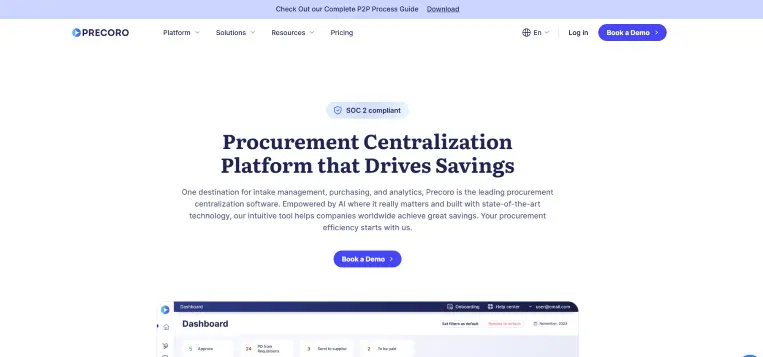
Key features:
- Ability to add attachments and comments to PRs and tag a colleague for better communication
- Real-time budget tracking for better spending and financial decisions
- Automatic document creation with 3-way matching for efficient invoicing
Precoro is a cloud-based procurement software that helps companies manage and efficiently optimize their entire purchasing and spending workflow through automation. The tool offers a range of features divided into four main pillars: request, which allows users to efficiently generate and track any type of request with 80% less manual work; approve, which allows for 2.5x faster approval workflow, ensuring every document gets to the right people fast; order, which allows to streamline the entire order generation process for better supplier relationships; and control, which will enable businesses to keep accurate track of their spending in real-time to avoid exceeding budget limits and other inefficiencies. Additionally, the platform can be integrated with multiple business solutions, including accounting, ERP, analytics, security, and more, allowing for integrated strategies with other company areas. Reviewers have rated Precoro with an outstanding 4.8 stars on Capterra and 4.7 in G2.
19) Order Management Software (OMS)
As its name suggests, order management software, also known as OMS, are solutions that assist businesses in tracking, processing, and managing all aspects related to order fulfillment, from order acceptance to payment processing, shipping preferences, and delivery tracking, among other important steps. These platforms often include or can be easily integrated with, inventory management functionalities to easily unify the entire supply chain process and manage orders efficiently. Let’s dive into our example for this category.
Brightpearl

Key features:
- A single platform for multi-channel order processing for online and offline sales
- Automated workflows for inventory allocation, order routing, shipping, and invoicing, and more
- Real-time inventory updates to avoid overselling or other inventory-related errors
Brightpearl is a great OMS solution for big companies that sell their products or services on multiple channels and need to keep all their operations unified and organized on one single interface. It is possible to integrate the tool with big ecommerce platforms, including Amazon, Magento, and Shopify, for online sales or to a Point of Sales (PoS) system for physical sales. The tool offers features of automated ordering, fulfillment, shipping, and invoicing workflows, as well as analytics and reporting to track the performance of each sales channel based on important metrics such as order value and revenue. Users of Brightpearl have rated the platform with 4.4 stars on Capterra and 4.5 in G2.
20) Customer Service
Closely connected with CRM, comprehensive customer service (CS) software offers a wide range of possibilities for effectively managing customer data and delivering the best possible customer experience. Enterprises need to include a proper CS solution to monitor ever-evolving customer expectations and demands. One enterprise application that can suitably manage all customer-relevant data is Zendesk, which has a solid 4.4 stars on Capterra and 4.3 on G2.
Zendesk
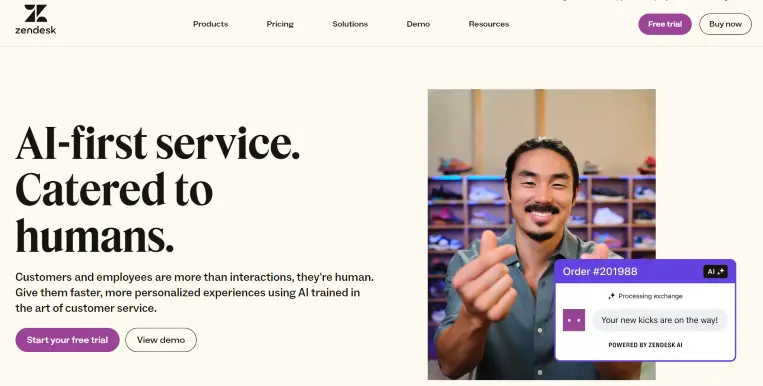
Key features:
- Various enterprise software packages for customer support, sales, and customer engagement
- Provides professional customer care tools, a help center and live chats
- It enables you to reduce support costs and increase productivity and customer satisfaction
Zendesk helps enterprises manage a globally dispersed customer service team by offering customized features for support processes and workflow configuration in a single place. They also offer omnichannel support solutions for e-mail, chat, phone, or self-service, providing a platform for seamless conversations and support systems. This is an excellent example of what enterprise technology offers by managing customer support no matter the team’s location. With three core plans, starting at 5€ an agent, Zendesk products and platforms mean better customer experience and profit.
21) Issue Tracking
Moving on with our examples of enterprise software comes issue tracking tools. Software teams need to have a clear overview of the development process, all bugs, and their status. Issue tracking and bug reporting software helps them track, record, and find all bugs that need attention and provides a platform to help team leaders assign the issue to the person who needs to resolve it. That way, teams can easily prioritize and communicate more effectively while any potential software issues can be addressed immediately.
Jira
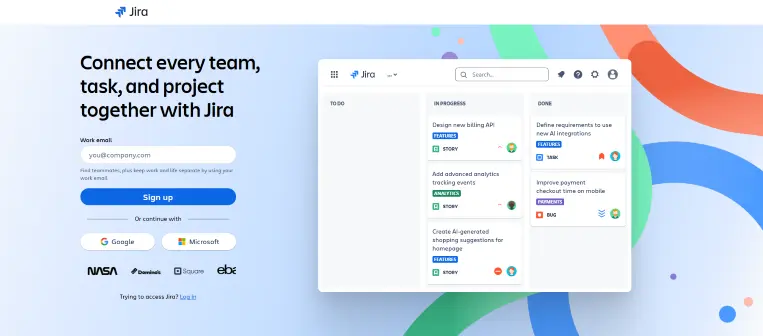
Key features:
- Ability to transfer tickets and customize their logic based on specific needs (e.g., transfer them)
- Deep filtering by different categories and creating reports and dashboards
- Connecting with other developers’ tools, such as GitHub and Bitbucket
Jira is one of our examples of enterprise applications that are fairly easy to use in terms of functionality, and that’s why it is very popular among the IT community. Teams can easily create custom boards depending on the needs but also different perspectives such as for developers, CTOs, tracking, etc. Connecting with other developer platforms, such as GitHub and Bitbucket, and seeing which code is behind the ticket is also possible with Jira, among many other invaluable IT features. Capterra reviewers gave this solution an average rating of 4.4 stars, while G2 reviewers gave it a 4.3 stars rating.
22) Surveys
Enterprises use survey software to support any aspect that connects them with an audience, whether clients, customers, or business partners. Surveys can provide insights for marketing campaigns, helpdesks, employee satisfaction levels, or general feedback about specific business questions. SurveyMonkey leads the way, with a strong 4.6 Capterra rating and 4.4 G2.
SurveyMonkey
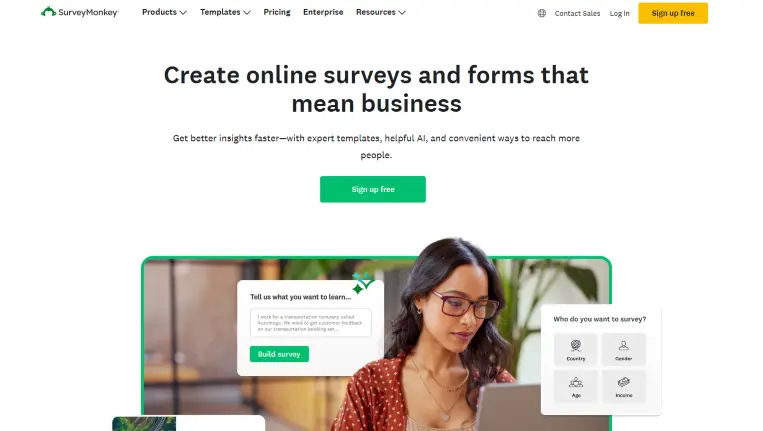
Key features:
- One of the most popular survey platforms worldwide for any target group
- Surveys can be conducted via weblink, e-mail or chat, and in social media
- Powerful analysis functions & fast export of results in various formats
Out of many types of enterprise applications, SurveyMonkey is one of the most popular solutions on the market. It claims to be trusted by 98% of Fortune 500 companies and offers a centralized admin dashboard and audit logs for managing and tracking user activity. It also offers easy onboarding and enterprise-level security. You can also integrate your survey data into over 80 external apps, such as Salesforce, Marketo, or Oracle Marketing Cloud.
23) Ideation
Brainstorming, innovation, and generating ideas often connect people across the business. Feedback, comments, voting systems, and gathering insights from employees, important stakeholders and external partners are run by technologies that facilitate continuous improvement and keep full transparency – databases can be accessed by anyone in the company. One of the most popular software is IdeaScale, which has a rating of 4.6 on Capterra and 4.5 on G2.
IdeaScale
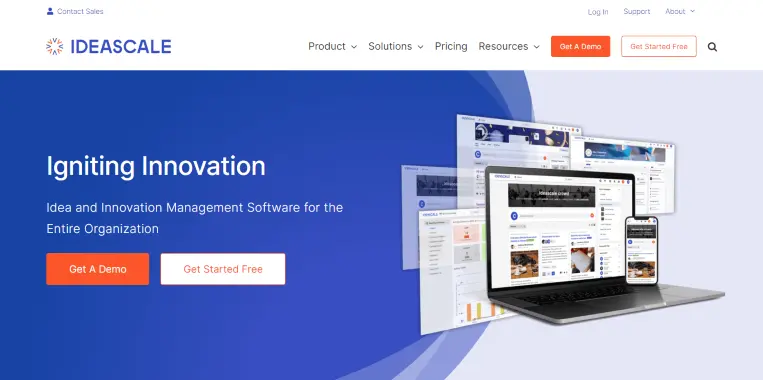
Key features:
- Comprehensive innovation management platform with 3 pillars of innovation: collaboration, evaluation & development
- Offers numerous tools for integrating crowdsourcing within the innovation process
- Multiple reporting and analytics options through IdeaScale dashboards
This enterprise management system software can be used for employee engagement, enabling teams to ask important questions in one centralized place. It’s extremely useful for enterprises with disparate and large teams since communication processes can often seem difficult. Involving the public is also a feature that makes this solution perfect for exploring untapped ideas that can generate indispensable value. Focused on collecting ideas and providing a platform to vote, IdeaScale also supports other means of innovation, including workflow automation, team building, idea collaboration, and many more.
24) Cloud Computing Platforms
Cloud services are used by enterprises that need heavy computing power and search for solutions that enable them to avoid building their own IT infrastructure, which is usually quite expensive. Some of our enterprise applications examples have the cloud as the option to access your data online, regardless of location or time. Amazon Web Service (AWS) is one of the most popular cloud platforms in the world and its average rating of 4.6 stars for various products on Capterra and 4.5 on G2 makes this solution high on the list of choosing a cloud platform.
Amazon Web Services
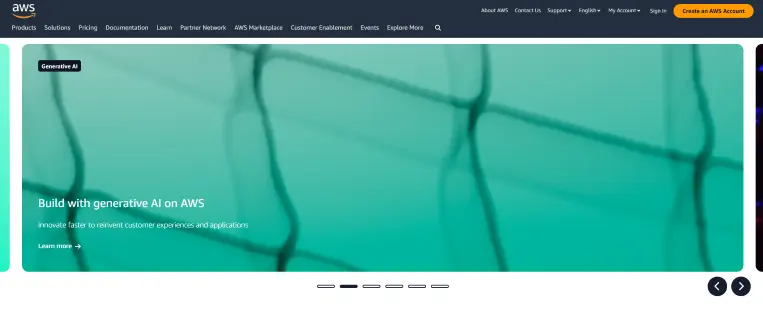
Key features:
- Leading international provider with a broad product portfolio that includes over 160 cloud services
- Services include databases, data processing, developer tools and machine learning
- Transparent, usage-based prices with volume discounts and short notice periods
AWS offers a wide range of cloud computing platforms, such as data storage, compute on-demand services and networking. With an impressive 35% market share, Amazon offers its services to enterprises worldwide. Subscribers can utilize virtual hardware configurations (CPUs, GPUs for processing, SSDs for storage, and RAM for memory), operating systems, and apps such as CRM.
25) Specification Management
Specification management is the systematic process of gathering, maintaining, and distributing detailed technical information about a product, material, equipment, or project through a centralized digital platform. It is relevant for various industries, including manufacturing, construction, pharmaceuticals, fashion, and other industries interacting with a supply chain. Professional specification management software allows enterprises to standardize the process, offering a common language that keeps everyone on the same page. These solutions help streamline the generation of specs, reduce the risk of errors or incomplete data, and create a reliable single source of truth, boosting supply chain efficiency by improving collaboration, reducing delays, and ensuring compliance with industry standards and regulations. Now, let’s review an example of a specification management solution.
SpecLink
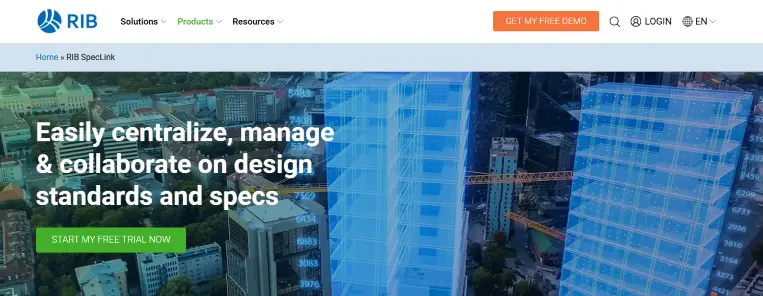
Key features:
- Advanced back-end technology automates specs creation, allowing users to edit specs 70% faster with no errors or omissions.
- Robust and up-to-date database with 900+ content sections, 3000+ reference standards, and more.
- Mobile and web-based access is available to view, share, edit, or comment on specs anywhere.
SpecLink is a cloud-based specification software with decades of experience helping companies streamline spec management with automation, smart linking, custom templates, and other innovative features. SpecLink empowers teams to collaborate in the spec writing process with transparency and accountability at the forefront, increasing productivity and reducing the risk of errors and omissions. Additionally, the software fully integrates with Revit BIM software to connect specs and 3D models and make updates in real-time. SpecLink has a 10+ year relationship with the CSI, making it its only construction software partner. All these benefits position the software as one of the leading solutions in the market, earning it a positive rating of 4.5 stars in Capterra and 4.1 stars in G2.
Key Takeaways & Guidance
We have explained the enterprise software definition, shown the benefits that it can bring to your organization, and provided a comprehensive list of enterprise tools that will enable your company to connect teams across your business. Each solution has its own specific features, and, like any enterprise, you might want to consider just one or several.
Of course, there are other application areas of modern enterprise software that we have not discussed here. There is also a wide range of providers for each area. We chose an example for each of them based on above-average ratings on Capterra and G2. Therefore, this list of enterprise applications has no claim to completeness; it is meant to serve as inspiration. If you want to dig deeper into any of the software mentioned, almost all of them offer a free trial version for this purpose.
If you want to start with a powerful yet easy-to-use platform to estimate costurately and efficiently, then give RIB CostX a try. Our powerful software will take your estimating to the next level by swiftly adapting to your workflows and project requirements. Get your free demo today!

Most Recent
11 mins read
10 mins read
10 mins read
29 mins read
Blog Categories

Ebook











